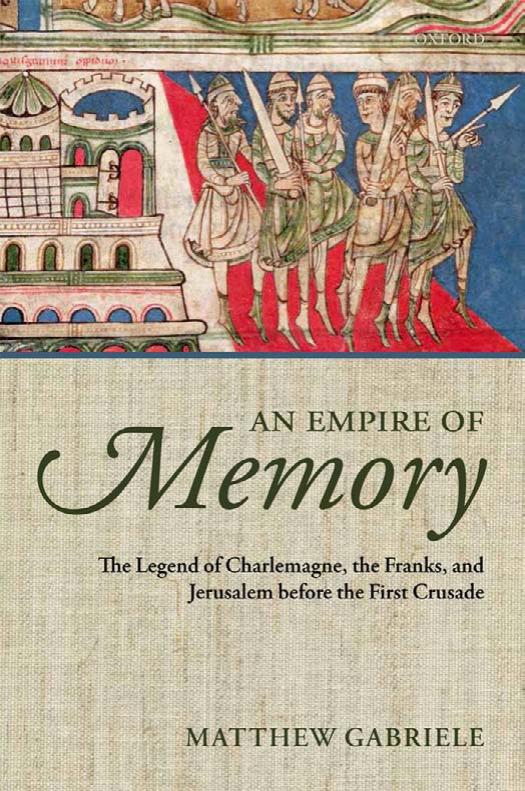An Empire of Memory by Gabriele Matthew

Author:Gabriele, Matthew. [Gabriele, Matthew.]
Language: eng
Format: mobi, epub, pdf
Published: 0101-01-01T00:00:00+00:00
104
The Franks Recreate Empire
Figure 4.1. Eleventh-Century Ottonian Ivory Water Vessel, Aachen Cathedral Treasury.
# Domkapitel Aachen (photo by Ann Münchow).
hierarchy (an emperor above a king, as a king was above a count). Theirs was a
different dynasty, utilizing different symbols of authority than their Carolingian
predecessors. Territorial boundaries became more important, if perhaps more
limiting, in understanding empire.23 Otto III, however, resurrected and re-engaged
with an earlier Carolingian imperial ideal and Henry II followed in that Otto’s
footsteps. Otto III and Henry II both envisioned either ‘a Christian Empire or
Imperial Christendom, under the sole control of the Emperor’.24 Ritual and
23 Robert Folz, The Concept of Empire in Western Europe from the Fifth to the Fourteenth Century, tr.
Sheila Ann Ogilvie (London, 1969), 27–32, 47–51; Timothy Reuter, ‘Regemque, quem in Francia pene
perdidit, in patria magnifice recepit: Ottonian Ruler Representation in Synchronic and Diachronic
Comparison’, in Janet L. Nelson (ed.), Medieval Polities and Modern Mentalities (Cambridge, 2006),
136–42; and John W. Bernhardt, ‘Concepts and Practice of Empire in Ottonian Germany (950–
1024)’, in Björn Weiler and Simon Maclean (eds.), Representations of Power in Medieval Germany,
800–1500 (Turnhout, 2006), 142–54.
24 Folz, Concept of Empire, 64–6, quotation at 64; Helmut Beumann, Der deutsche König als
‘Romanorum Rex’ (Wiesbaden, 1981), 75–7; and now Matthew Gabriele, ‘Otto III, Charlemagne,
The Franks’ Imagined Empire
105
symbolism of universal authority mattered here. For example, at his coronation,
Otto III wore a cloak decorated with figures from Revelation and possessed another
garment called the orbis terraum, the latter based on the description of the mantle
worn by the High Priest of the Temple in Jerusalem. Henry II’s imperial mantle
was embroidered with stars, signifying his cosmic authority, while he carried a
golden globe, representing his worldly authority.25 An Ottonian ivory water vessel
(Figure 4.1), likely dating from the reign of Otto III, nicely synthesized Roman,
Carolingian, and Ottonian ideas of empire. Here, soldiers and bishops all inhabit a
city reminiscent of the heavenly Jerusalem, while the emperor, likened to Christ
and wielding universal power on earth akin to his in heaven, rules them all. The
entire iconographic program here represents the emperor’s imperium and how it
extended over all the faithful.26 What changed around the millennium, however,
was that Rome became progressively more important to this conception of imperial
authority. For example, Otto III attempted (unsuccessfully) to rule from Rome and
may have begun building himself a palace on the Palatine Hill.27 Later eleventh-
century emperors continued their predecessors’ Rome policy, gradually adopting
the title Romanorum rex (which became standard by the time of Henry V, 1106–
25) and advancing their claims to far-flung empire through these Roman preten-
sions. Anselm of Bésate’s mid-eleventh-century Rhetorimachia thought that Henry
III (1039–56) as king of the Romans would soon rule the ancient provinces of
Greece, Judea, and Persia.28
But––and I cannot emphasize this enough––the study of imperial ideology by
modern scholars is too often confined to the imperial circle itself, despite abundant
evidence that shows how deeply others were thinking about universal empire too.29
The sources discussed in Chapters 1 and 2, especially those coming from religious
houses scattered across Europe, are replete with such instances. Even West Frankish
kings began to absorb some of this imperial language, sometimes calling themselves
imperator or augustus, oftentimes speaking of their special place as rex Francorum
and Pentecost A.
Download
An Empire of Memory by Gabriele Matthew.epub
An Empire of Memory by Gabriele Matthew.pdf
This site does not store any files on its server. We only index and link to content provided by other sites. Please contact the content providers to delete copyright contents if any and email us, we'll remove relevant links or contents immediately.
The 5 Love Languages: The Secret to Love That Lasts by Gary Chapman(9287)
The Space Between by Michelle L. Teichman(6576)
Assassin’s Fate by Robin Hobb(5856)
Wiseguy by Nicholas Pileggi(5320)
Everything Happens for a Reason by Kate Bowler(4479)
Gerald's Game by Stephen King(4377)
Pillow Thoughts by Courtney Peppernell(4018)
A Simplified Life by Emily Ley(3971)
The Power of Positive Thinking by Norman Vincent Peale(3864)
Resisting Happiness by Matthew Kelly(3197)
Girl, Wash Your Face by Rachel Hollis(3126)
Harry Potter and the Prisoner of Azkaban (Book 3) by J. K. Rowling(3113)
Being Aware of Being Aware by Rupert Spira(3086)
Real Sex by Lauren F. Winner(2867)
The Code Book by Simon Singh(2859)
More Language of Letting Go: 366 New Daily Meditations by Melody Beattie(2850)
Name Book, The: Over 10,000 Names--Their Meanings, Origins, and Spiritual Significance by Astoria Dorothy(2840)
The Holy Spirit by Billy Graham(2777)
The Secret Power of Speaking God's Word by Joyce Meyer(2754)
